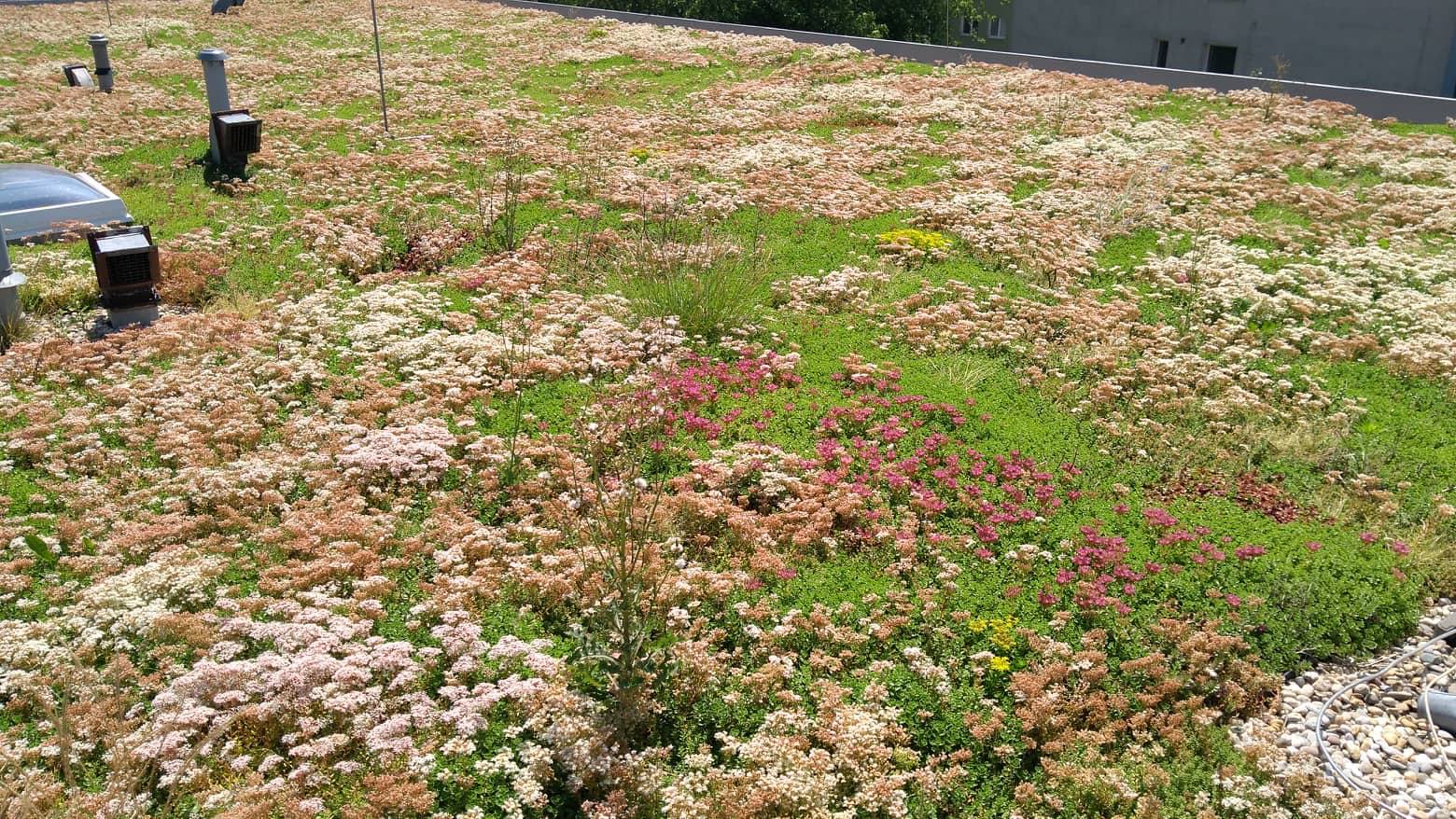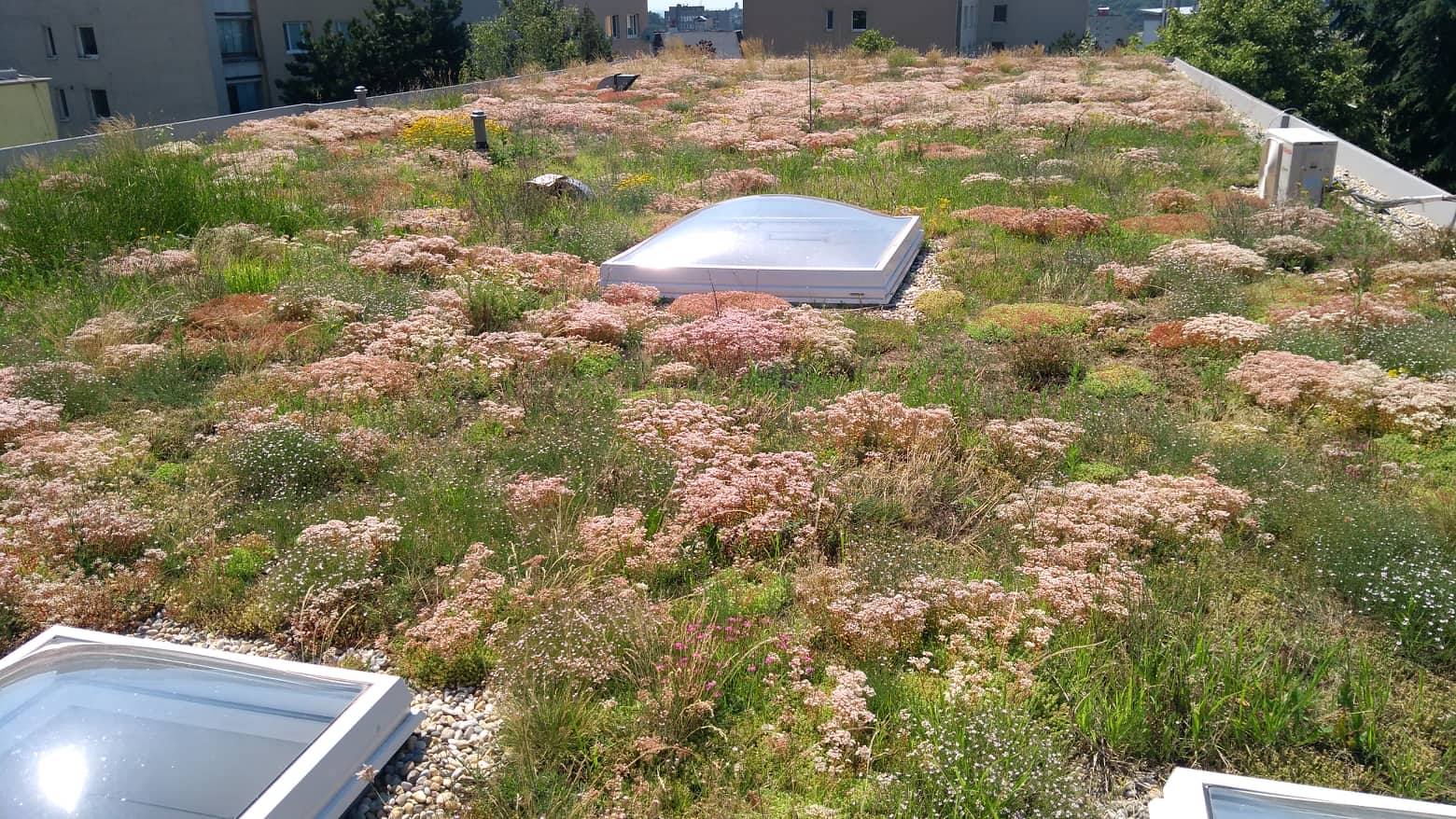The City of Bratislava has installed “green” or vegetation roofs on the buildings of the Archa senior citizens’ home. The vegetation cover on the roofs is one of many potential adaptation measures to respond to the adverse impacts of climate change. The vegetation roof has cooling properties and is effective in sustainable rainwater management.
The cooling property of the vegetation roofs results from the evaporation of water from the vegetation layer, the shading effect of the vegetation, its ability to reflect sunlight, energy consumption at photosynthesis, and the accumulation of rainwater. The vegetation roofs cool the building down by several degrees (in particular, in the space beneath the roof).
As far as rainwater management goes, the vegetation layer retains water in many ways. When compared with a “traditional” roof, the vegetation roof not only shows an overall relevant reduction of water flow but also differences in its distribution. At periods of intense rainfall, the water leaves the vegetation roof only at the end of the rainfall.
Installation of vegetation roofs will have several positive impacts. The main benefit is the reduction of thermal variations and improved rainwater retention, improving the microclimate, supporting biodiversity, etc. Last but not least, we can also note the aesthetic effect of the area for its residents and users of the facilities, as well as the residents of the neighboring houses who have a clear view of the roofs. Vegetation roofs also provide protection against UV rays or mechanical damage to the roof cover and represent an additional load layer.



